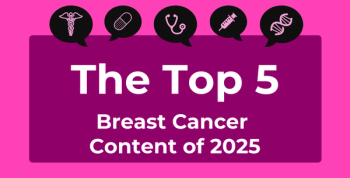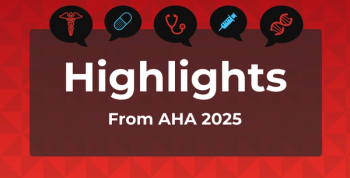
Camlipixant May Benefit Patients With High-Burden RCC
Key Takeaways
- Camlipixant showed significant efficacy in patients with higher baseline cough frequency, despite not meeting the primary endpoint in the overall population.
- The trial demonstrated camlipixant's potential as a well-tolerated treatment for refractory chronic cough, with mild to moderate adverse events.
A phase 2a trial of camlipixant, a selective P2X3 receptor antagonist, found that while the drug did not significantly reduce cough frequency in the overall population with refractory chronic cough, it produced meaningful improvements in patients with a higher baseline cough burden.
Camlipixant showed efficacy in patients with chronic cough and a higher baseline cough frequency in a multicenter phase 2a study published in the
The study offers insights into the potential role of camlipixant, a P2X3 antagonist, in treating
The RELIEF trial was a multicenter, randomized, double-blind study conducted at 16 sites in the United Kingdom and United States, evaluating both the safety and efficacy of escalating doses of camlipixant. A total of 68 adult patients, aged 18-80 years, with RCC lasting longer than one year and an awake cough frequency greater than 10 coughs/hour, were enrolled. Notably, 85% of participants were female. The mean duration of cough among participants was 14.7 years, and the median baseline awake cough frequency was 32.4 coughs/h. The study was prematurely terminated due to the COVID-19 pandemic, with 52 patients completing both dosing periods.
Patients were randomized 1:1 to receive escalating doses of camlipixant (25 mg, 50 mg, 100 mg, and 200 mg twice daily over 4-day intervals) or matching placebo, followed by a 10- to 14-day washout and crossover to the alternate treatment. The primary efficacy end point was the placebo-adjusted change from baseline in awake cough frequency at each dose, with secondary end points including 24-hour cough frequency, cough severity (measured by a visual analog scale), and cough-specific quality of life (as assessed by the Leicester Cough Questionnaire, LCQ). Safety outcomes focused on the incidence of adverse events.
In the intention-to-treat (ITT) population, camlipixant produced numerical reductions in awake cough frequency at all doses compared to placebo, but these reductions did not reach statistical significance (P values ranging from .086 to .460). However, in prespecified subgroups, camlipixant achieved statistically significant reductions in awake cough frequency across all doses.
Among participants with a baseline awake cough frequency of 20 or more coughs/h (79% of the ITT population), camlipixant resulted in statistically significant reductions in cough frequency, with the placebo-adjusted changes in awake cough frequency ranging from –17.7% to –27.0%, corresponding to P values ranging from .001 to .032. These effects were more pronounced in the subgroup with a baseline frequency of 32.4 or more coughs/h, where reductions ranged from –28.1% to –32.4% across the 4 doses (P ≤ .001 for all doses). In the ITT population, a significant interaction was observed between baseline awake cough frequency and primary efficacy outcome across all doses (P = .026), indicating that patients with more severe baseline cough experienced a greater benefit.
Patient-reported outcomes, including cough severity and LCQ scores, also showed numerical improvements with camlipixant compared to placebo. After 16 days, camlipixant treatment led to placebo-adjusted reductions in cough severity VAS scores of –4.6 mm in the ITT population, –7.6 mm in the ≥20 coughs/h subgroup, and –11.5 mm in the ≥32.4 coughs/h subgroup, with the most significant improvement observed in patients with the highest baseline cough frequency. Patients receiving camlipixant also showed greater improvements in mean LCQ scores compared to placebo, with increases of 1.8, 2.3, and 2.6 in the ITT, ≥20.0, and ≥32.4 coughs/h subgroups, respectively. In contrast, the placebo group showed smaller gains of 1.1, 1.0, and 1.3 in the same subgroups.
Chronic cough affects approximately 10% of the global population,1 with considerable impact on quality of life, including sleep disruption, depression, and urinary incontinence. RCC is notorious for its resistance to standard therapies and the suboptimal efficacy or poor tolerability of off-label treatment options, some of which also carry a risk of addiction. Previous clinical trials with first-generation P2X3 antagonists demonstrated efficacy but were associated with high rates of taste disturbance, particularly at higher doses.2
Camlipixant was generally well tolerated in the trial.1 The incidence of treatment-emergent adverse events (TEAEs) was similar between camlipixant and placebo groups (68.9% vs. 67.2%) and did not increase with higher doses. Most TEAEs were considered mild to moderate in severity. Four severe TEAEs occurred in 2 patients but were not deemed treatment-related. Taste disturbance, a known class effect of P2X3 antagonists, was reported in 9.8% of camlipixant-treated patients and 4.9% in the placebo group. No cases of ageusia were observed, and no patients discontinued treatment due to taste disturbance.
The trial design, which involved within-patient dose escalation without a washout between doses and short four-day treatment intervals, may have limited the ability to fully characterize dose-response relationships. In addition, although the study was not powered to detect statistical differences in patient-reported outcomes, the results point to potential improvements in both symptom perception and quality of life.
"Although the primary endpoint was not met, these data suggest that camlipixant may be an effective and well-tolerated therapy across the dose range studied in patients with RCC,” the authors concluded, also noting that the findings are consistent with results from the subsequent phase 2b SOOTHE trial, which further evaluated the efficacy of camlipixant in this patient population.3 Given the observed outcomes, camlipixant merits further study in severe RCC, especially among patients with a high initial cough burden.
References
1. Smith JA, Morice AH, Birring SS, et al. Camlipixant in refractory chronic cough: A Phase 2a, randomized controlled trial (RELIEF). Am J Respir Crit Care Med. 2025;211(6):1072-1075. doi: 10.1164/rccm.202501-0093RL
2. Smith JA, Kitt MM, Morice AH, et al; Protocol 012 Investigators. Gefapixant, a P2X3 receptor antagonist, for the treatment of refractory or unexplained chronic cough: A randomised, double-blind, controlled, parallel-group, phase 2b trial. Lancet Respir Med. 2020;8(8):775-785. doi: 10.1016/S2213-2600(19)30471-0
3. Smith JA, Birring SS, Blaiss MS, et al. Camlipixant in refractory chronic cough: a phase 2b, randomized, placebo-controlled trial (SOOTHE). Am J Respir Crit Care Med. 2025;211(6):1038-1048. doi: 10.1164/rccm.202409-1752OC
Newsletter
Stay ahead of policy, cost, and value—subscribe to AJMC for expert insights at the intersection of clinical care and health economics.









































